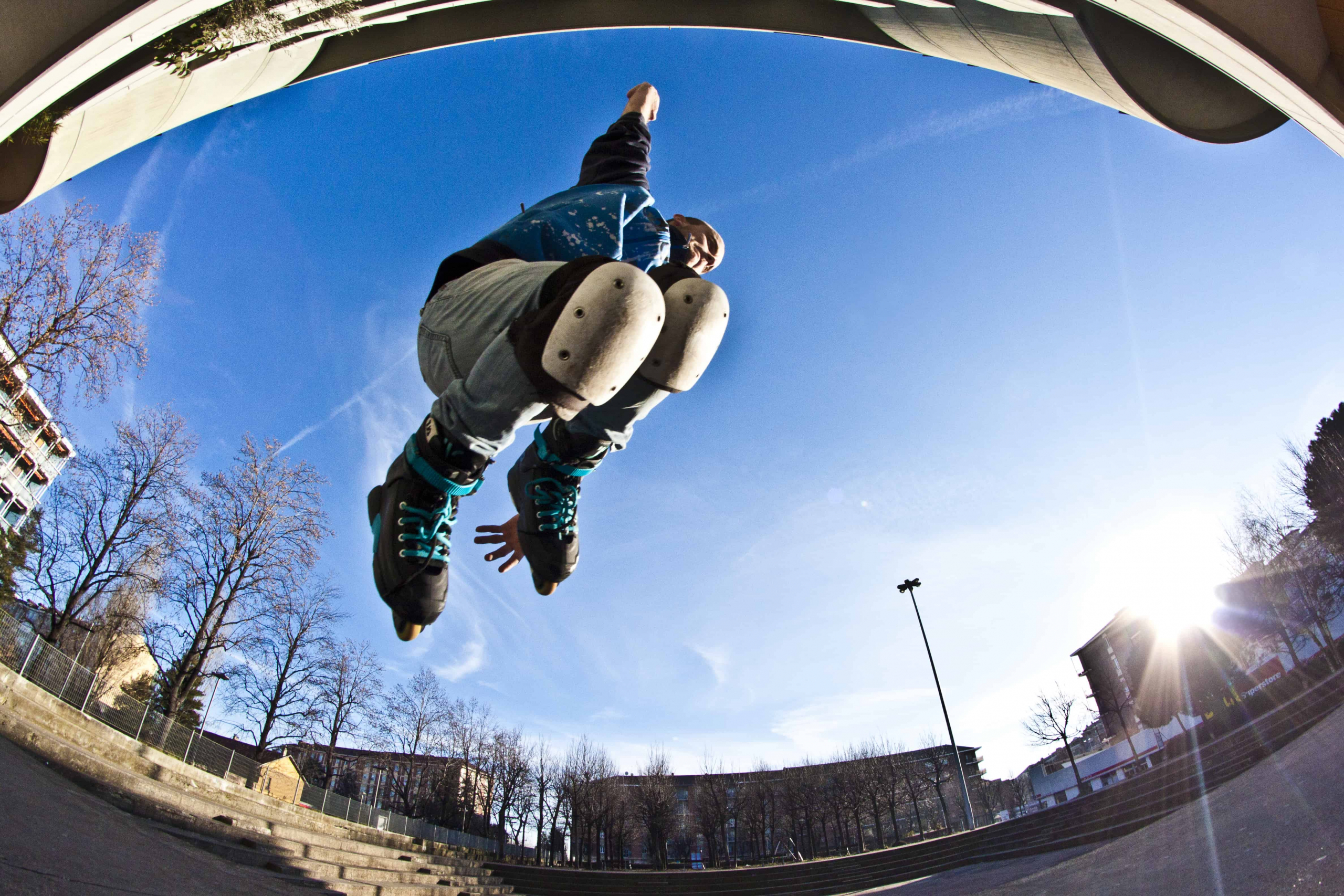The world of sport is far more diverse than what you see offered at sports bars. This series will profile the lesser-known, the more interesting, and the downright peculiar sports that you haven’t heard of until now.
Imagine lacing up your old rollerblades, throwing on your favourite song, and then finding the flashiest, most intricate way to move through a series of obstacles. Rollerblade freestyle slalom is a fusion of musicality, flourishes, two-wheeled technical tricks, speed, dance, and showmanship.
When inline skating is mentioned, most people wouldn’t imagine a hard-core, physically-demanding, extremely technical sport. Yet, rollerblade freestyle slalom is an intense and highly complex form of skating, which has athletes performing tricks and dance-like maneuvers around a set of cones. These cones are placed in a straight line 50, 80, or 120 centimetres apart, depending on the event.
Rollerblade freestyle slalom athletes tend to wear any form of comfortable clothing that allows them to move, bend, and stretch easily. The most important piece of gear athletes wear while competing is the skate itself. Slalom performers who choose to use regular inline skates modify them to better satisfy their needs during performances.
Most rollerblade freestyle slalom athletes will perform on slalom inline skates, which differ from regular inline skates in a few ways. Slalom skates are made using carbon or glass fiber, which makes them stronger and firmer for better ankle support, all the while being lightweight and providing athletes with a comfortable fit.
Slalom skates also feature shorter wheel frames so that maneuvering in them is easier. Slalom skaters tend to try to fit as many big wheels onto their frames as possible — the number varying based on foot size and frame length.
Slalom skates also have ‘rocker effect’ wheel set-ups. This means that the first and last wheels on the frame are actually higher up off the ground than the middle two. This allows for easier ability to perform the tricks and dance-like moves freestyle skaters are known for.
During competitions, athletes are scored on difficulty, variety, continuity, speed, and rhythm. They are also scored based on their artistic abilities, body performance, musical expression, and choreography. Skating competitions consist of all or some of the following categories: Classic Freestyle Slalom, Pair Freestyle Slalom, Speed Slalom, Battle Freestyle Slalom, and Freestyle Slides. Athletes can participate as solo performers or in groups, in as many events as they want.
The top five scores for freestyle competitions; the top four for speed competitions; and the top three for slides are used to calculate the world rankings.
Freestyle athletes compete in local and national competitions. The winners from each country move on and compete in the world championships, which were held in Paris this year. No matter your gender, age, or ethnicity, everyone competes together.
Although the sport is not yet in the Olympics, it still brings people together from all over the globe.


